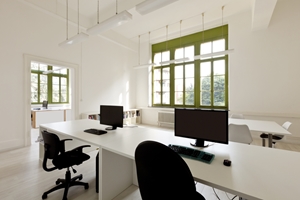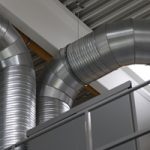Academics, public authorities and other professionals have conducted dozens of studies on factors that affect employee performance.
One topic of interest among researchers is office climate, and how it impacts workers’ wellbeing and productivity. This attention has prompted facility managers to purchase indoor air quality instruments to record temperature and humidity data, as well as detect carbon dioxide.
How much does temperature impact the workforce?
Worker performance declined 7 per cent when temperatures exceeded 25 degrees Celsius.
According to a study published in the Journal of Environment Health Science and Engineering, employee performance may increase 10 per cent if they’re working in ideal indoor environments.
What defines an optimal office ecosystem? The study, conducted by researchers Komalanathan Vimalanathan and Thangavelu Ramesh Babu, discovered that a Goldilocks solution is preferable – not too hot, not too cold, but just right.
Mr Babu and Mr Vimalanathan found negative attitudes and behaviour among employees performing tasks in particularly cool or warm atmospheres. In addition, the two scientists deemed slightly hot or cold conditions as detrimental to worker productivity.
Call centre personnel, for example, became 2.4 per cent less productive for every degree increase between 21.9 degrees Celsius and 28.5 degrees Celsius. In addition, their performance decreased as much as 7 per cent when room temperatures rose past 25 degrees Celsius.
Maintaining temperature stability
To ensure indoor temperatures remain in the 25-degree range, building managers can install wireless digital data loggers that record indoor climate data in real time. These devices are particularly handy when administrators have to monitor rooms with different condition requirements.
For example, a walk-in blood storage room and university lecture hall may be located within the same facility. However, the blood storage room must be maintained at a temperature between 2 degrees Celsius and 6 degrees Celsius, as per recommendations by the World Health Organization.
With instruments such as the Saveris Wireless Monitoring System, a HVAC technician could gather temperature data from multiple rooms and receive alerts when room climates deviate from normal conditions.
 Laboratories typically have stringent climate control standards.
Laboratories typically have stringent climate control standards.Eliminating emissions
Not surprisingly, the World Green Building Council (WGBC) found that the reduction of carbon dioxide (CO2) and other airborne pollutants from the workplace can raise employee productivity by anywhere from 8-11 per cent.
Digging deeper into the data, WGBC discovered people have difficulty making decisions when exposed to harmful substances. In addition, the organisation found that even when indoor CO2 levels hit 1000 parts per million (ppm) – which is considered an acceptable level among professionals – people’s ability to take action in response to problems declined 11-23 per cent.
To reduce the prevalence of CO2 and other pollutants in the workplace, WGBC recommended integrating exhaust ventilation systems into printer rooms and construct buildings with zero-emission carpets, adhesives and finishes.
Still, even if these materials are present within structures, building managers shouldn’t neglect to use multifunction indoor air quality devices. These instruments not only detect CO2 levels, but also register carbon monoxide, air velocity, volumentric flow and turbulence, alerting facility administrators to other possible issues.
 Is your office equipped with adequate ventilation equipment?
Is your office equipped with adequate ventilation equipment?Adhering to national regulations
Employers shouldn’t neglect the recommended guidelines and standards dictated by Australian authorities. For example, Safe Work Australia’s Code of Practice for managing work environments and facilities states optimal sedentary work conditions is between 20 and 26 degrees Celsius. Depending on the time of the year, building administrators may want to favour the lower or higher end of the scale.
SWA recommended businesses use fans, install air conditioners and position workers away from heat sources during the hotter months of the year. During the winter, organisations should obviously increase indoor heat, but ensure it doesn’t get out of control.
Given the plethora of information regarding indoor climate’s effect on the workforce, there’s no doubt enterprises should invest in the processes and gadgets necessary to maintaining productive atmospheres.









 Reduce cooking oil costs while ensuring quality
Reduce cooking oil costs while ensuring quality Expert knowledge on CO2 monitoring
Expert knowledge on CO2 monitoring Refrigeration knowledge - in 3 modules
Refrigeration knowledge - in 3 modules



